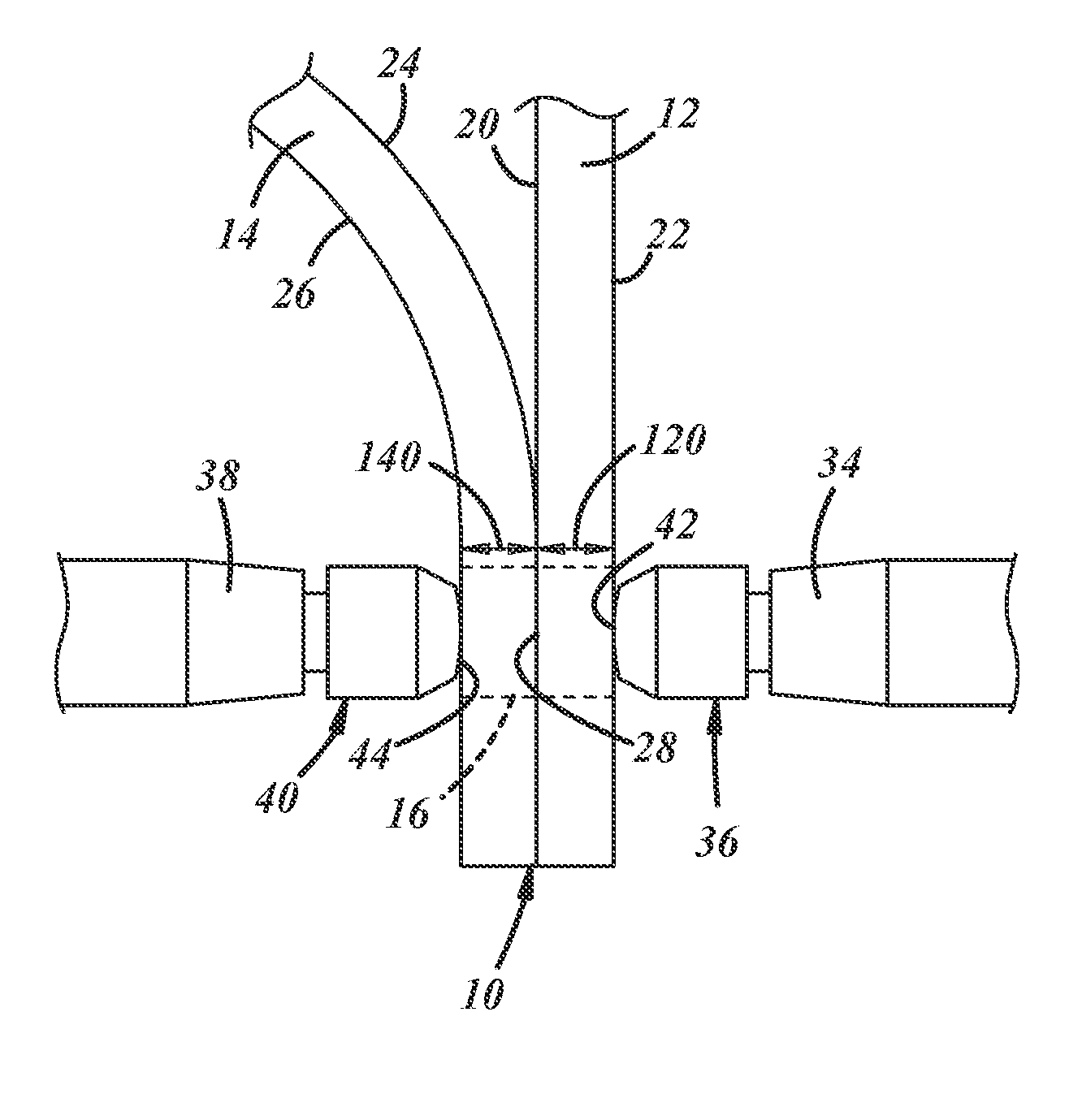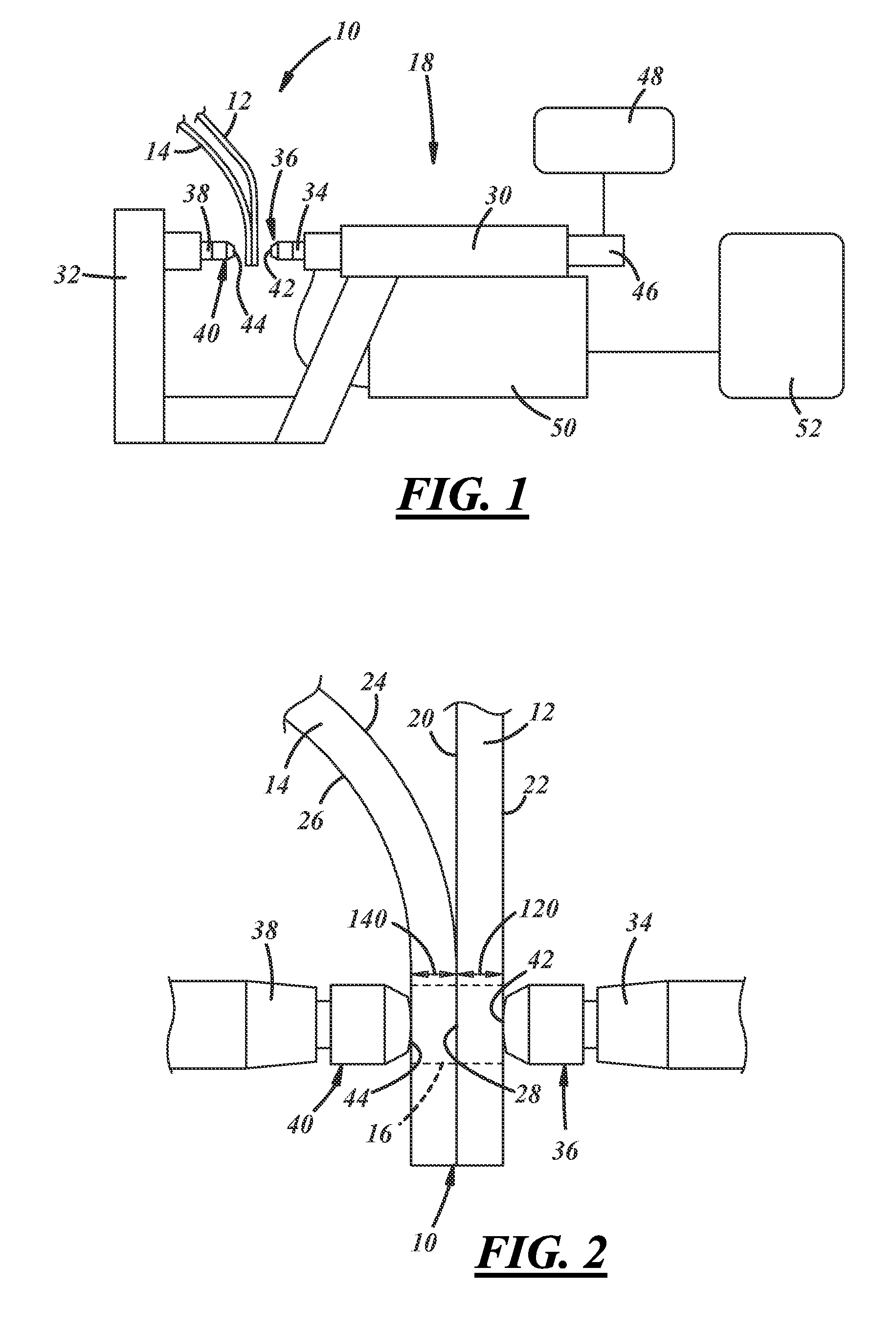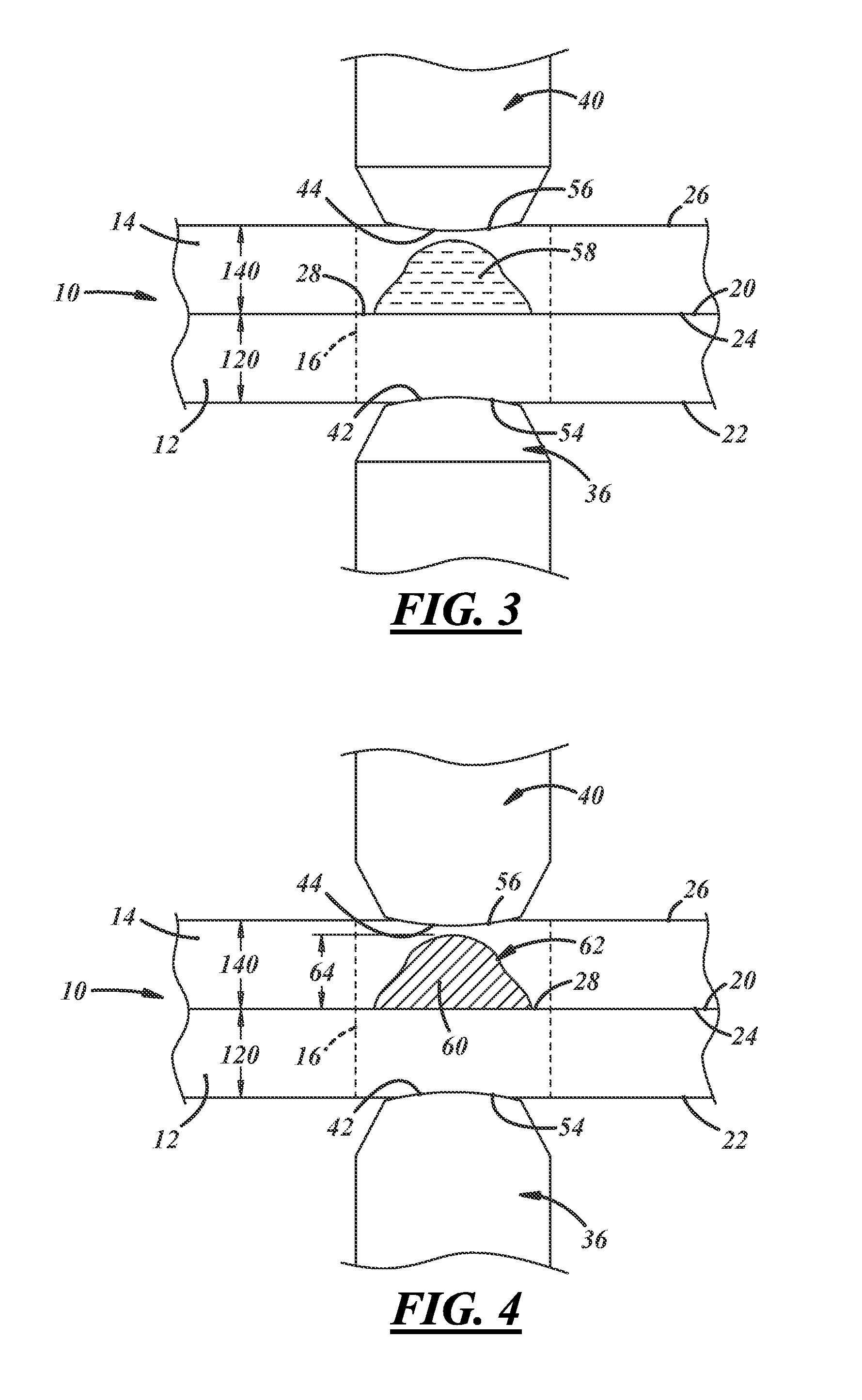Multi-step direct welding of an aluminum-based workpiece to a steel workpiece
- Summary
- Abstract
- Description
- Claims
- Application Information
AI Technical Summary
Benefits of technology
Problems solved by technology
Method used
Image
Examples
example 1
[0051]Here, in the first example, a 1.2-mm 6022 aluminum alloy workpiece was spot welded to a 1.0-mm hot-dip galvanized low carbon steel workpiece by the multi-stage spot welding method under 800 lb of force applied by the spot welding electrodes. The weld schedule is depicted in FIG. 9. As shown, electrical current at a constant level of 17 kA was first passed through the workpieces for a first period of 125 ms to initiate and grow a molten weld pool within the aluminum alloy workpiece. Next, passage of electrical current was ceased, i.e., dropped to 0 kA, for a second period of 500 ms to solidify the molten weld pool into a weld nugget, which along with one or more Fe—Al intermetallic layers formed a weld joint between the steel and aluminum alloy workpieces. Electrical current was then re-started and passed through the workpieces to re-melt at least a portion of the weld nugget and, additionally, to cause metal expulsion at the faying interface of the workpieces. The electrical c...
example 2
[0052]In this example, which is depicted in FIG. 10, a 1.2-mm 6022 aluminum alloy workpiece was spot welded to a 1.0-mm hot-dip galvanized low carbon steel workpiece by the multi-stage spot welding method under 700 lb of force applied by the spot welding electrodes. As shown, electrical current at a constant current level of 15 kA was passed through the workpieces for a first period of 300 ms to initiate and grow a molten weld pool within the aluminum alloy workpiece. Next, passage of electrical current was ceased for a second period of 500 ms to solidify the molten weld pool into a weld nugget, which along with one or more Fe—Al intermetallic layers formed a weld joint between the steel and aluminum alloy workpieces. Electrical current was then passed in the form of seven current pulses to re-melt at least a portion of the weld nugget and, additionally, to cause metal expulsion at the faying interface of the workpieces. The seven current pulses increased in applied current level in...
example 3
[0053]In this example, which is depicted in FIG. 11, a 2.0-mm 6022 aluminum alloy workpiece was spot welded to a 1.0-mm hot-dip galvanized low carbon steel workpiece by the multi-stage spot welding method under 800 lb of force applied by the spot welding electrodes. Here, as shown, electrical current at a constant current level of 17 kA was passed through the workpieces for a first period of 125 ms to initiate and grow a molten weld pool within the aluminum alloy workpiece. Next, passage of electrical current was ceased for a second period of 500 ms to solidify the molten weld pool into a weld nugget, which along with one or more Fe—Al intermetallic layers formed a weld joint between the steel and aluminum alloy workpieces. Electrical current was then passed in the form of twenty seven current pulses over a third period of approximately 960 ms to re-melt at least a portion of the weld nugget and, additionally, to cause metal expulsion at the faying interface. Each current pulse reac...
PUM
| Property | Measurement | Unit |
|---|---|---|
| Fraction | aaaaa | aaaaa |
| Fraction | aaaaa | aaaaa |
| Thickness | aaaaa | aaaaa |
Abstract
Description
Claims
Application Information
 Login to View More
Login to View More - R&D
- Intellectual Property
- Life Sciences
- Materials
- Tech Scout
- Unparalleled Data Quality
- Higher Quality Content
- 60% Fewer Hallucinations
Browse by: Latest US Patents, China's latest patents, Technical Efficacy Thesaurus, Application Domain, Technology Topic, Popular Technical Reports.
© 2025 PatSnap. All rights reserved.Legal|Privacy policy|Modern Slavery Act Transparency Statement|Sitemap|About US| Contact US: help@patsnap.com



